This is What Happened After Dinosaur-Killing Asteroid Hit the Earth, New Study Reveals
Tsunami was strong enough to reach "halfway around the globe.”
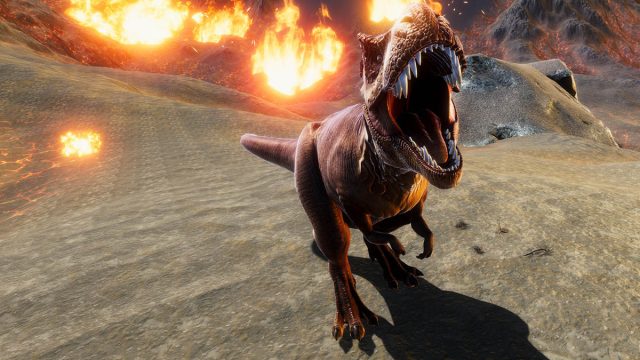
A stunning video simulation shows what happened to Earth after the massive asteroid strike that wiped out the dinosaurs, based on findings from a new study led by the University of Michigan. That miles-wide asteroid hit the planet 66 million years ago, and the researchers’ findings make it clear why the dinosaurs were no match for the outer-space interloper. Read on to see the video and find out just how powerful scientists say the asteroid was.
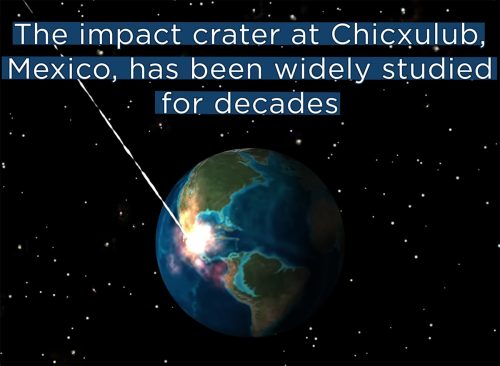
The asteroid, named Chicxulub, struck the planet near Mexico’s Yucatan Peninsula. The force of the impact was so great that it created a tsunami with mile-high waves that traveled halfway across the planet, says the study, published this month in the journal AGU Advances. Keep reading to learn more and see the video.

To arrive at their conclusions, researchers reviewed the geological record at more than 100 sites worldwide and found evidence for the tsunami’s global power. “This tsunami was strong enough to disturb and erode sediments in ocean basins halfway around the globe, leaving either a gap in the sedimentary records or a jumble of older sediments,” said the study’s lead author, Molly Range.
The researchers calculated that the initial energy in the impact tsunami was up to 30,000 times more powerful than the energy in the December 2004 Indian Ocean earthquake tsunami, which killed more than 230,000 people and is one of the largest tsunamis ever recorded.
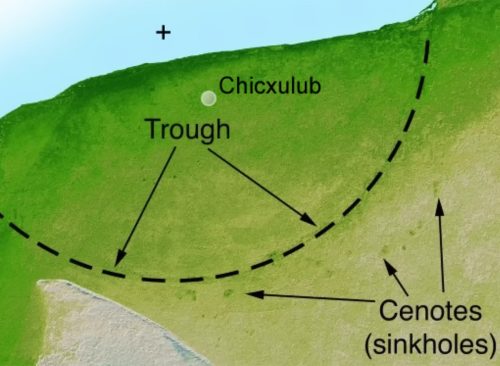
Based on previous research, the scientists created a model of an asteroid that was 8.7 miles wide and struck the Earth at 27,000 mph. It created about a 62-mile-wide crater on impact with the planet’s crust, spewing material high and far.
The researchers found that:
- Two-and-a-half minutes after the asteroid strike, a surge of displaced earth created a 2.8-mile-high wave that receded as the ejected material fell back to Earth.
- Ten minutes after the strike and 137 miles from the impact site, a 0.93-mile-high tsunami wave—shaped like a ring and moving outward—swept across the ocean in all directions.
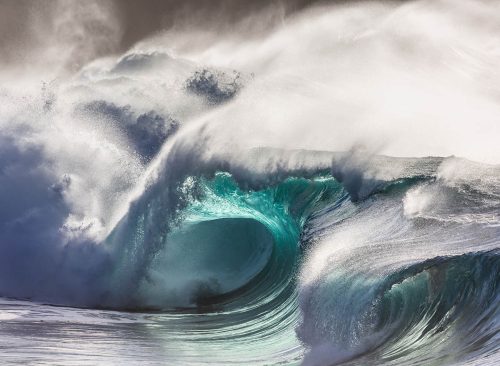
According to the team’s simulation:
- One hour after impact, the tsunami had spread outside the Gulf of Mexico and into the North Atlantic.
- Four hours after impact, the waves had crossed into the Pacific Ocean.
- Twenty-four hours after impact, the waves had crossed most of the Pacific and most of the Atlantic.
- Forty-eight hours after impact, significant tsunami waves had reached most of the world’s coastlines.
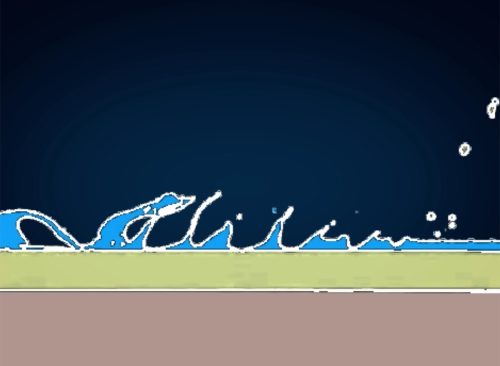
The scientists created a video simulation of the effect the tsunami’s waves had on the planet. In some areas, they say, waves exceeded 320 feet, and waves higher than 30 feet hit the North Atlantic coast. “Depending on the geometries of the coast and the advancing waves, most coastal regions would be inundated and eroded to some extent,” the study authors wrote. “Any historically documented tsunamis pale in comparison with such global impact.”














